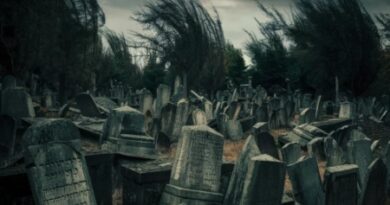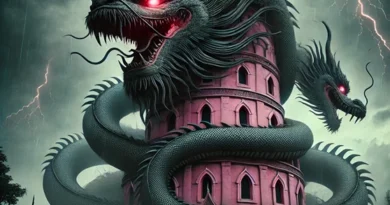The History On Budapest Comes To Life in Dracula’s Labyrinth
First of all, a short geography lesson. When you hear the name “Dracula,” what country do you think of? Most of you will likely point out without hesitation “Romania,” or more precisely, the Transylvanian region of Romania, where Bran Castle is located and the story allegedly took place. But the actual historical figure on whom Dracula is based, in one way or another, reached different European regions. You can find him represented in other cities and, in our case, also in various attractions, some of which perfectly fit the category of “Horror Tourism.”
Labyrinth under the Castle Hill, also known as Buda Castle Labyrinth and Dracula Labyrinth, located near one of the most sought-after sites in the city, is a prime example. So should you also go on a journey underground following the famous vampire? You are welcome to read and decide for yourself.
Wait A Minute! What Does Dracula Have To Do With Budapest?
The novel Dracula, as we know, takes place mainly in Transylvania, with the hero’s foray into England. As far as we know, there is no mention of Budapest in the novel itself, but that does not mean that the historical figure on whom Dracula is based to some extent – “Dracula” or Vlad III, known as “Vlad the Impaler” – is not connected to Budapest. If you are unfamiliar with the moments when human history turns into a horror movie, the ruler of Wallachia, the “Romanian land” in southern Romania located north of Lake Danube, was known mainly for his cruelty. He killed thousands or tens of thousands of people (depending on who you ask), with his favorite form of killing being the insertion of a skewer into the human body, hoping that the weight of the person would cause the skewer to slowly enter the depths of his body and kill him in terrible agony.
Today we believe that during the 15th century, beginning in 1462, Vlad the Impaler was captured by Matthias Corvinus, then the king of Hungary, and imprisoned in the country. We have yet to determine precisely what the duration of the captivity was. However, according to the historical evidence, the conditions there were probably not particularly difficult (if you were thinking of a plot like “I Spit on your grave” in which the torturers are tortured, think again). Vlad III survived the imprisonment and then returned to Wallachia and regained power.
History comes alive In Dracula’s Labyrinth
If you’ve read the relatively concise historical description we’ve provided here, you may raise an eyebrow at the fact that Budapest has an entire labyrinth dedicated to Dracula. But you know how things work, and you can see the most obvious expression of this in Bran Castle: a castle that has become one of Romania’s most popular tourist destinations and probably the best-known of all, thanks to a far from the obvious link to the famous Gothic novel, which spawned quite a few movies afterward.
With or without connection to the world-famous vampire (forgive me, Robert Pattinson), the labyrinth under Buda Castle – also known as Dracula’s Labyrinth in Budapest – is a very interesting tourist attraction. As you probably already understood, the maze is close to Buda Castle (but the entrance is outside the castle’s boundaries). This castle, which was used as the historical royal palace of the kings of Hungary and is built on the edge of the castle hill, is considered the main symbol of the city and one of its prominent tourist centers. Under the castle – more precisely, within a short walking distance from it – you will find a system of caves about half a million years old, with a total length of over a kilometer.
These caves also have a fascinating history dating back to the Middle Ages. The caves were created for geological reasons by water flow over time and in impressive quantities underground until man decided to use them for his needs. In the 13th century, the inhabitants of the surrounding villages began to connect. Over the years, the caves have been used, among other things, as a shelter (the tunnels were prepared to house tens of thousands of Budapest residents in emergencies), a hospital, a wine cellar, a prison, and a torture chamber.
Don’t Believe The Stories. Maybe
The question is whether Dracula, or the historical figure he is based on, was imprisoned here. If you ask the fans of the myths or those trying to market the attraction, they may claim that it is. In practice, he was held in the cells of the royal Vyšgard fortress, located about 35 kilometers from Budapest itself. The labyrinth is a specially protected natural cave. The half-million-year-old cave systems, isolated from each other, but located at the same level, began to be connected by the inhabitants of the surrounding villages in the 13th century. Later, this operable cave system functioned as a wine cellar in times of peace and during wars and was used as a shelter.
During the 1930s, the labyrinth was a tourist attraction, but it functioned as a shelter during World War II. The first wax factory in Hungary operated here between 1984 and 1996. The place was closed between 1997 and 2011 but welcomed visitors again in November 2011. Be that as it may, this attraction is a historical visit, like a journey through the time tunnel. In the 20th century, this place served as a tourist attraction, a shelter during World War II, and even a wax factory.
It was closed for about a decade and a half, but at the end of 2011, it was reopened in its current form as a tourist attraction. Among the stone corridors, you will find statues, tombstones, and burial chambers, you will meet familiar historical figures (mainly the kings of Hungary for their generations), and you will get to see exhibitions showing its rich history. Currently, there is an exhibition of cave photographs, a wax exhibition recreating opera scenes, and a display of specially illuminated medieval stone monuments.
This Is Where It Gets Exciting: Meet Dracula’s Labyrinth In Budapest
The first thing that Dracula’s Labyrinth in Budapest offers, first of all, is a unique and slightly stressful atmosphere. The caves are on top of citadel hill but at a depth of more than 165 meters. The caves are dark, with most of the lighting provided by the lantern the tour participants are holding.
As you may have already understood, this underground maze’s challenge is finding the exit. In between, you will come across some historical dolls (don’t worry: this is not the kind of place where they will scare you), various performances related to Dracula, classical music you can define as “stressful,” and effects from the repertoire of places of this type, such as fog or lights of different shades. All in all, a visit to the labyrinth usually lasts about 30-45 minutes, so it is pretty simple to include it in your visit plan in Budapest in general or in the area of Buda Castle, on the west side of the Danube, in particular.
From our impression, Labyrinth under the Castle Hill is a lovely attraction that does the job. We’re not sure that this experience will be the scariest that devout horror fans and those who have visited other horror attractions have encountered in their lives, but still. If you are into horror attractions, you will find some located in Budapest itself – we highly recommend Nightmare in Budapest, which we reviewed on the site a few months ago – you can more than add it to your schedule.
Dracula’s Labyrinth Budapest – Everything You Need To Know
Prices For Dracula’s Labyrinth
Please note that, unlike other tourist attractions, you cannot order tickets in advance through the official website or the various attraction websites. Payment is only in cash at the entrance and, even more important, in the local currency.
The prices for Dracula Labyrinth as of the current point in time (2023) are:
- Adult card: 4,000 forints
- Discounted ticket (student/pensioner/teacher): 3,500 forints upon presentation of a suitable certificate
- Child card (up to age 12): 1,000 forints
- Family ticket (two adults and two children up to the age of 12): 8,000 HUF
Opening Hours
The Labyrinth under the Castle Hill is open all year round from 10:00 a.m. to 7:00 p.m., with the last entry at 6:30 p.m.
How Do You Get To The Labyrinth Under The Castle Hill?
The maze is not precisely located under Buda Castle, although its name might suggest otherwise. It is about a 15-20 minute walk from the castle, at 9 uri street. You can reach it on foot from other attractions in the area. Next door, you will find the famous Fisherman’s Citadel of Budapest, the house of the magician Houdini, the old Rozvum confectionery – and the list goes on.
From the eastern side of Budapest, where most tourists stay, line 16 will take you relatively close. Line up towards Castle Hill and stop at Szentharomsag Square, the highest point on your route.
General tips Before Visiting Dracula Labyrinth
- Although children can also visit here, it is not a good idea for too early age: the experience in a closed and dark place with slightly stressful music and various effects may discourage them. On the other hand, they organize activities for children here, including treasure hunts, Harry Potter parties, Cinderella parties, lectures for children, and other less relevant attractions for families visiting Budapest.
- The temperature in the maze is a little cold, around 16-18 Celsius degrees , according to the announcement on the attraction’s official website. You can dress accordingly with a jacket or a long garment, but of course, there is no need to dress excessively. You are not visiting an ice cave here
- It is recommended to come with comfortable shoes, because there may be puddles or the floor will be a little slippery
- You can visit the maze independently, with the help of arrows scattered throughout it. The maze itself has a thread that you can hold onto to know where to go
- Although there are lanterns along various parts of the route, some claim that other areas need to be more light despite the lanterns. In this case, you can use the flashlight of your cell phone. On the other hand, as horror fans, you are looking for precisely the darkness and the scary atmosphere, aren’t you?
Looking for more attractions in Budapest? Take a look on these:
💀 Killer Deals & Scary Recommendations 💀
🎭 Costumes & Accessories
HalloweenCostumes Fun Costumes Entertainment Earth
🛒 Online Shopping
AliExpress Amazon Walmart Etsy
🧛 Collectibles & Horror Brands
Funko Hot Topic Lego Spirit Halloween
🎢 Attractions & Tours
GetYourGuide Tiqets Viator Klook
📖 Blogs & Horror Sites
Bloody Disgusting iHorror Fangoria
🩸 Disclaimer: Some links are affiliate links. The price stays the same – it just helps keep the site alive 👻




